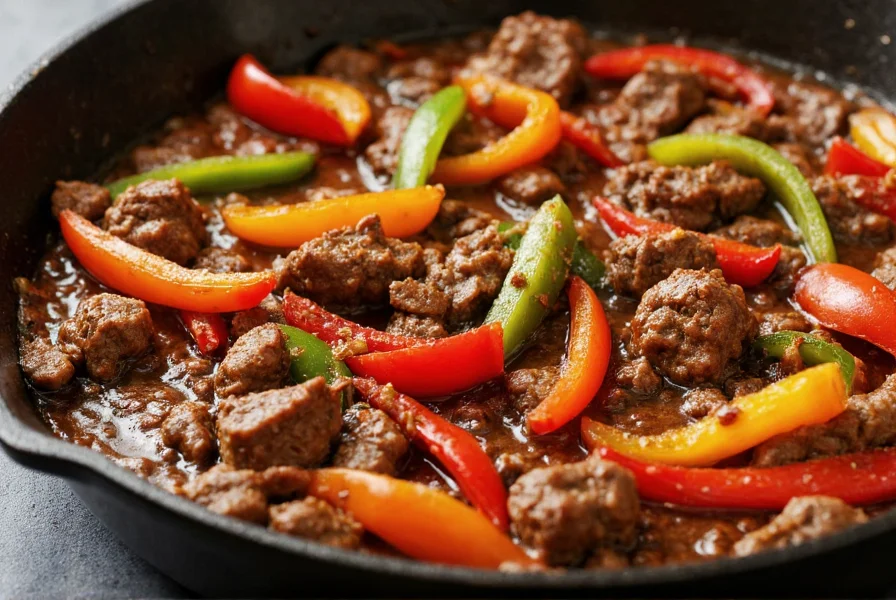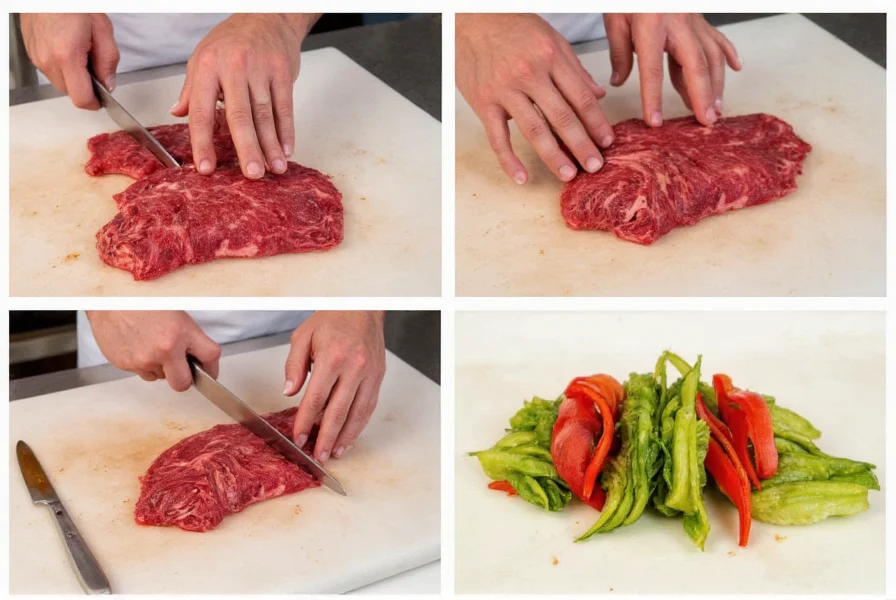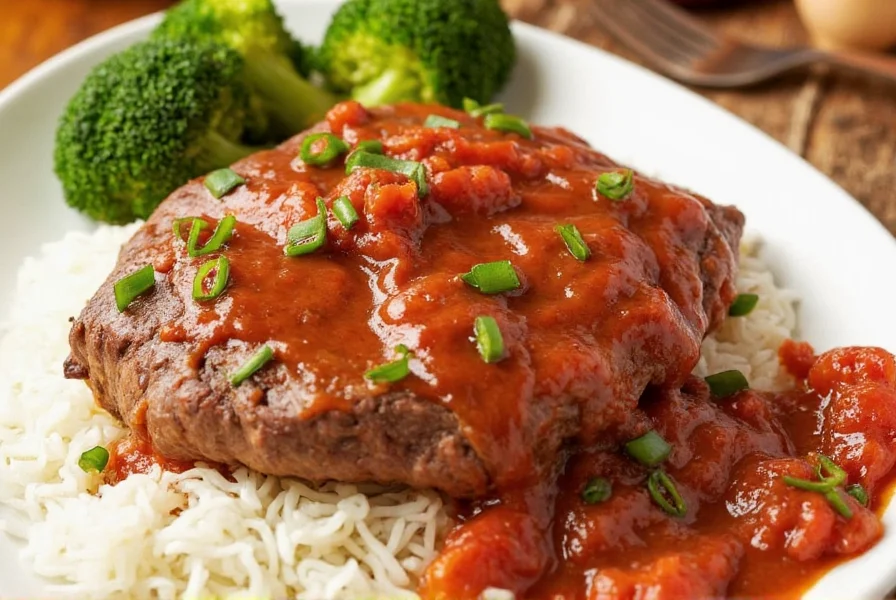Craving a restaurant-style pepper steak but don't have hours to spend in the kitchen? This streamlined recipe gives you all the flavor with minimal effort. As a former line cook who's prepared thousands of pepper steak dishes, I've perfected this simplified version that maintains authentic texture and taste while cutting unnecessary steps.
Why This Easy Pepper Steak Recipe Works
Most pepper steak recipes require multiple steps for marinating, velveting, and sauce preparation. My professional kitchen experience taught me which elements truly matter for flavor and texture. This approach eliminates complicated techniques while preserving what makes pepper steak special: tender beef, crisp-tender vegetables, and a glossy sauce that clings perfectly.
Simple Pepper Steak Ingredients
| Ingredient | Amount | Prep Notes |
|---|---|---|
| Flank steak | 1 lb (450g) | Sliced against the grain into ¼-inch strips |
| Bell peppers (mixed colors) | 2 large | Sliced into 1-inch strips |
| Yellow onion | 1 medium | Sliced into half-moons |
| Garlic | 3 cloves | Minced |
| Ginger | 1 tbsp | Grated |
| Soy sauce | 3 tbsp | Low sodium preferred |
| Rice vinegar | 1 tbsp | Substitute apple cider vinegar |
| Brown sugar | 1 tbsp | Packed |
| Sesame oil | 1 tsp | Toasted preferred |
| Beef broth | ¼ cup | Low sodium |
| Arrowroot powder | 1 tbsp | Substitute cornstarch |

Step-by-Step Easy Pepper Steak Instructions
- Prepare the beef: Slice flank steak against the grain into ¼-inch strips. Pat completely dry with paper towels—this critical step ensures proper searing.
- Make the sauce: Whisk together soy sauce, rice vinegar, brown sugar, sesame oil, and beef broth in a small bowl. Set aside.
- Stir-fry the beef: Heat 1 tbsp oil in a large skillet or wok over high heat until smoking. Add beef in a single layer (work in batches if needed) and sear for 1-2 minutes per side until browned but not fully cooked. Transfer to a plate.
- Cook vegetables: Add remaining oil to the pan. Stir-fry onions and bell peppers for 3-4 minutes until crisp-tender. Add garlic and ginger, cooking for 30 seconds until fragrant.
- Combine and thicken: Return beef to the pan with any accumulated juices. Pour in sauce mixture and bring to a simmer. In a small bowl, mix arrowroot with 2 tbsp cold water, then stir into the pan. Cook for 1 minute until sauce thickens.
- Finish: Remove from heat and serve immediately over steamed rice.
Pro Tips for Perfect Pepper Steak Every Time
- Slice against the grain: This cuts through tough muscle fibers for maximum tenderness—don't skip this step!
- High heat is essential: Your pan must be properly preheated to create that restaurant-quality sear without overcooking.
- Don't overcrowd the pan: Cook beef in batches if necessary to prevent steaming instead of searing.
- Prep everything beforehand: Stir-frying happens quickly, so have all ingredients measured and ready.
- Variation for dietary needs: Use tamari instead of soy sauce for gluten-free, or coconut aminos for soy-free.

Delicious Variations to Try
This basic pepper steak recipe serves as a perfect foundation for customization. Try these easy adaptations:
- Spicy version: Add 1-2 tsp sriracha to the sauce or include sliced fresh chili peppers with the vegetables
- Vegetarian alternative: Substitute sliced mushrooms or extra-firm tofu for the beef
- Low-carb option: Serve over cauliflower rice instead of regular rice
- Extra vegetable boost: Add sliced carrots or broccoli florets with the bell peppers
Serving Suggestions and Storage Tips
Pepper steak pairs perfectly with steamed jasmine rice or noodles. For a complete meal, serve alongside simple stir-fried greens or a crisp cucumber salad. Leftovers keep well in an airtight container in the refrigerator for up to 3 days. Reheat gently in a skillet with a splash of water to restore moisture—microwaving can make the beef tough.
Frequently Asked Questions
Can I use a different cut of beef for pepper steak?
Yes, while flank steak works best for this easy pepper steak recipe, you can substitute sirloin, ribeye, or tenderloin. Just remember to slice against the grain regardless of cut. Avoid tougher cuts like chuck that require longer cooking times.
How can I make pepper steak without cornstarch?
Arrowroot powder makes an excellent cornstarch substitute in this quick pepper steak recipe. Use equal amounts (1 tbsp arrowroot to 1 tbsp cornstarch). For a completely starch-free version, reduce the sauce longer until it naturally thickens, though the texture will be slightly different.
Why is my pepper steak tough?
Tough pepper steak usually results from either slicing with the grain instead of against it, or overcooking the beef. Always slice flank steak perpendicular to the muscle fibers, and remember that the beef continues cooking when you add the sauce—remove it from heat when it's just slightly underdone.
Can I prepare pepper steak ahead of time?
For best results, cook pepper steak just before serving. However, you can prep ingredients ahead: slice the beef and vegetables, and make the sauce up to 24 hours in advance. Store components separately in the refrigerator. The quick cooking time (under 30 minutes) makes last-minute preparation practical for weeknight dinners.











 浙公网安备
33010002000092号
浙公网安备
33010002000092号 浙B2-20120091-4
浙B2-20120091-4